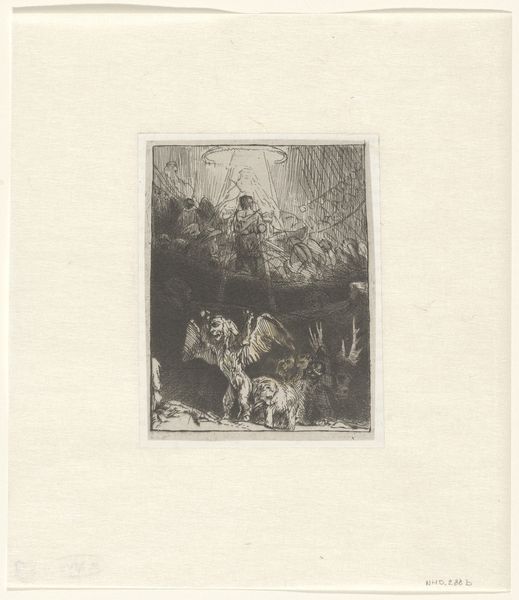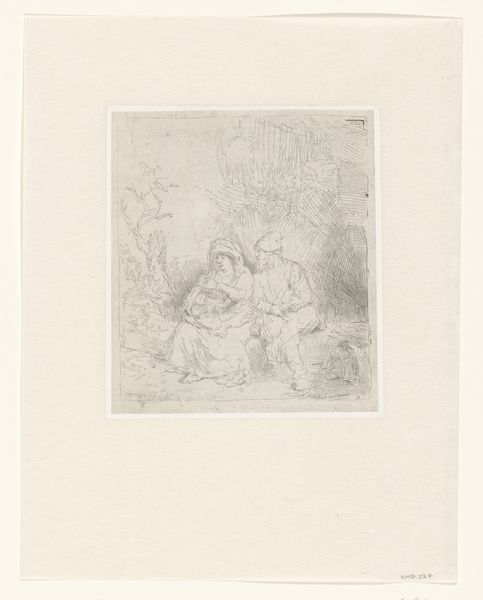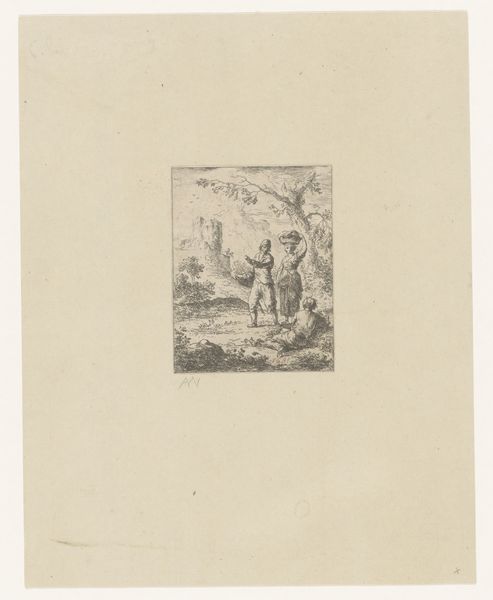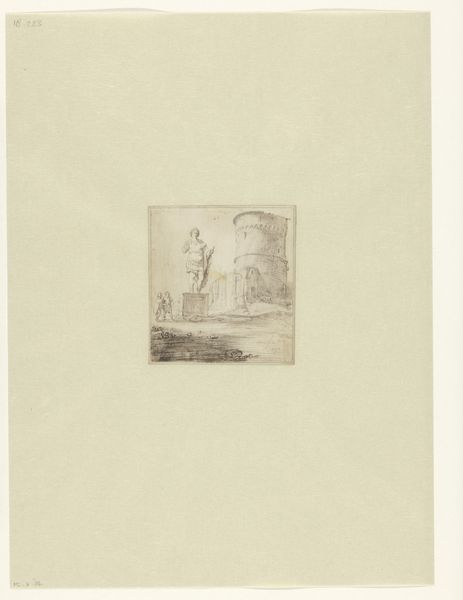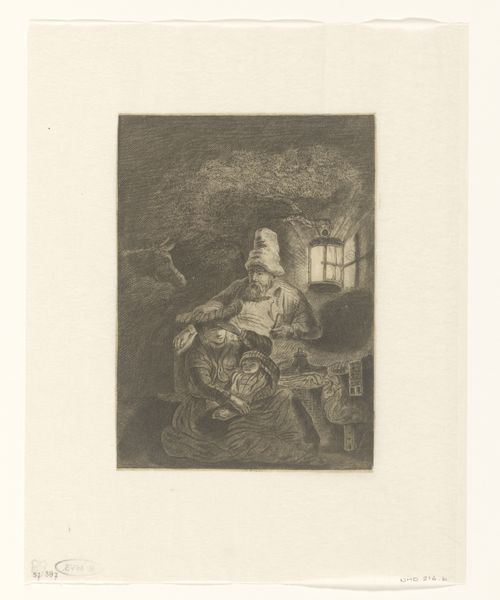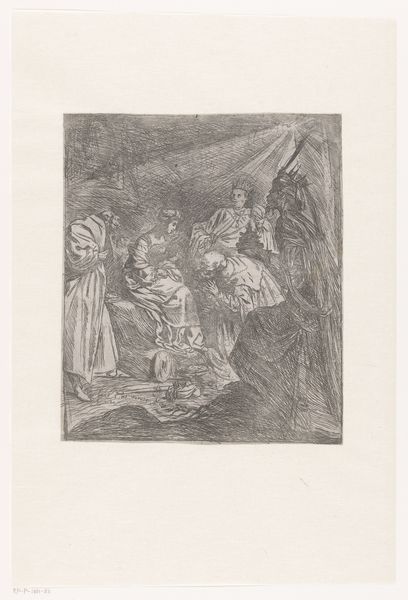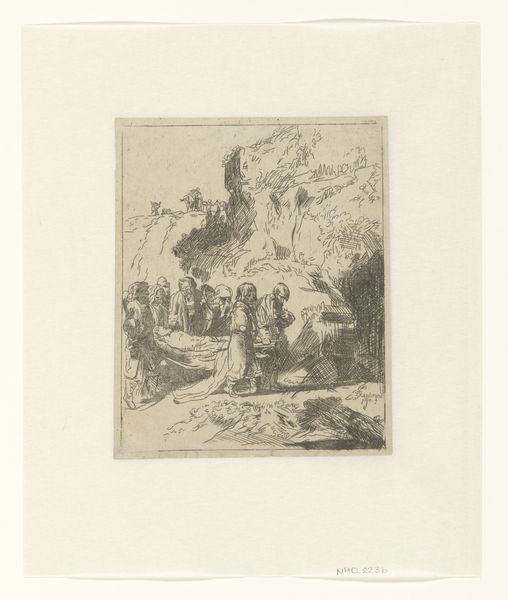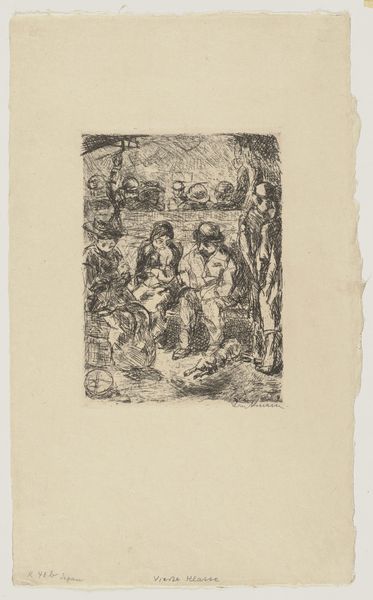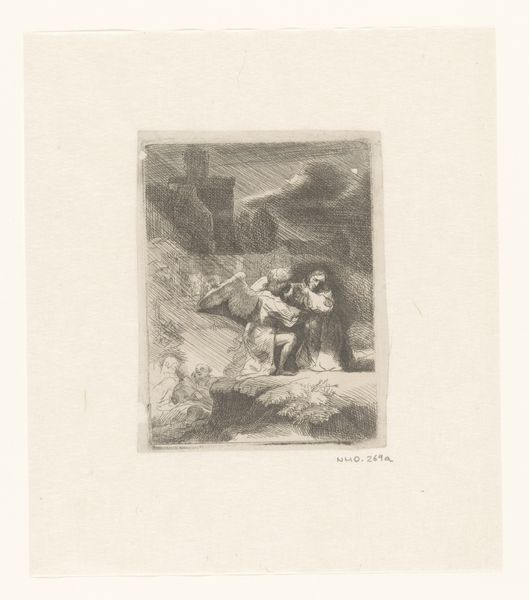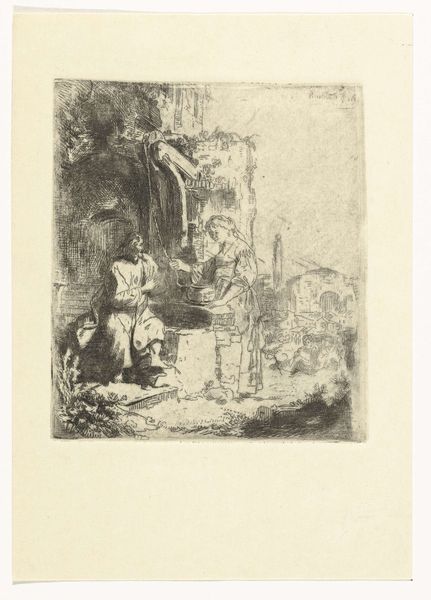
print, etching, paper
#
narrative-art
#
baroque
# print
#
etching
#
figuration
#
paper
#
history-painting
Dimensions: height 148 mm, width 112 mm
Copyright: Rijks Museum: Open Domain
Curator: Let's examine "The Raising of Lazarus: Small Plate," an etching dating to after 1642, currently held in the Rijksmuseum's collection. It's attributed to an anonymous artist. Editor: My initial reaction is one of quiet tension. The linework is incredibly detailed yet delicate, and there is almost a haunting quality given the subject and rendering. You almost expect sound to erupt from this print, though the scale keeps the spectacle muted. Curator: Precisely. The composition, despite being an intimate print, tackles a grand narrative scene. The Raising of Lazarus, a miracle recounted in the Gospel of John. Think about what that suggests regarding access to imagery at the time. Biblical scenes like this carried tremendous social weight. Editor: Absolutely, but the narrative implications resonate powerfully today as well. Lazarus’s resurrection mirrors a multitude of rebirths—societal transformations, personal awakenings, challenges to dominant power structures. What narratives are given the space and support for a "raising"? Whose experiences are erased by the dominant view? This simple scene carries within it themes of oppression and the opportunity to resist and liberate. Curator: The anonymous nature of its artist also plays into this context. The proliferation of prints made imagery and these kinds of complex messages far more accessible to a wider public during that period. But at the same time, to stay anonymous is a position reflecting constraints and institutional forces that existed. Editor: And that’s what really gets me with historical works: The questions and reflections are often more pertinent than the answers that may lay beyond our reach. The dark shading contrasted against the small plate contributes so well to the mysterious atmosphere. Curator: The figures themselves, so closely grouped yet expressing such individualized emotion... their posture toward Lazarus certainly suggests wonderment and uncertainty in the face of a literal miracle. The skill employed by an anonymous figure remains striking. Editor: It’s almost as though their faith is being challenged as much as it’s being confirmed. Lazarus embodies that disruption. We’re asked to look critically at the systems of control that decide whose stories live, whose die, and whose are brought back into the light. Curator: Ultimately, what this work accomplishes, through its rendering and medium, is the democratization of religious spectacle in 17th-century Netherlands, inviting private contemplation within a rapidly changing cultural landscape. Editor: For me, viewing “The Raising of Lazarus” is a potent reminder of our shared responsibility to breathe life into marginalized voices. A vital reminder for our present.
Comments
No comments
Be the first to comment and join the conversation on the ultimate creative platform.
